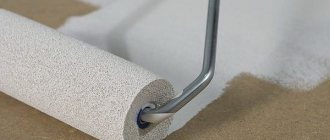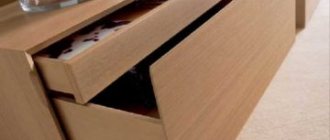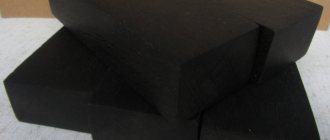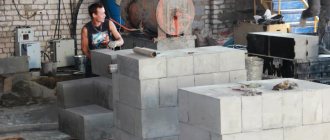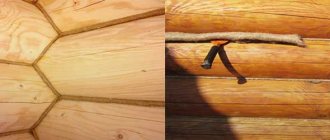Distilled alcohol has a specific and rather unpleasant taste and smell, evoking thoughts of medical alcohol.
Therefore, many insist on various materials , including oak chips, as well as oak bark.
The wood chips are prepared in a special way. Improper preparation of oak chips for liqueurs can spoil the taste and aroma of the drink.
In this article we will cover:
- what effect does oak chips have on the distillate?
- how to cook it;
- how to regulate the taste and smell of the tincture;
- how to infuse alcohol on oak chips;
- how many times can you use wood chips for infusion?
How does oak affect the distillate?
During the infusion of alcohol on wood chips, several simultaneous processes .
A mixture of alcohol and water penetrates the pores of the wood and washes out the tree sap, which changes the taste, color and smell of alcohol.
If the surface of the wood is subjected to heat treatment , then under the influence of alcohol and water, the destroyed chains of cellulose and lignin are converted into simple sugars, that is, glucose, fructose.
These sugars also mix with alcohol, giving it a distinct flavor .
In addition, alcohol interacts with tannins , which impregnate the bark and wood of the oak, as a result of which some of these substances enter the alcohol, changing its taste.
Oak chips give the drink a cognac color and taste , which not everyone likes, so to improve the taste and color it is processed in various ways, the most popular of which are roasting and soaking .
During caramelization, the chemical chains of cellulose and lignin break down into simple sugars (monosaccharides), which enter the distillate and change its flavor.
Due to the small amount of monosaccharides, they cannot radically change the taste of alcohol, but they can give it a zest and make it somehow more memorable.
To soak, the wood chips are poured with sweet wine or another alcohol-containing drink with a pronounced taste, which they then give to the distillate.
Depending on the temperature and roasting , the effect of oak wood on alcohol changes .
The use of minimally roasted wood chips (temperature 120–160 degrees, time 2–3 hours) gives the distillate a slight smell and taste of vanilla.
Medium roasting (temperature 180–200 degrees, time 6–10 hours) gives the drink the taste and smell of caramel.
Maximum roasting (temperature 200–220 degrees, time 15–20 hours) fills the alcohol-containing liquid with the aroma and taste of dark chocolate .
What wood is used for ammonia haze?
The selected method is suitable for wood with a high content of tannins (tannins). The most popular wood species for using ammonia haze: oak, chestnut, ash. When treated with ammonium hydroxide vapor, this wood acquires a rich, luxurious color in shades from light coffee to black (depending on the exposure time).
The beautiful structure of apricot wood is better revealed after staining with ammonia and oil treatment, as in the third photo
Maple, hornbeam, birch, lilac, ash, hazel, and elm will not respond to treatment with ammonia vapors, or after prolonged exposure they will acquire an unattractive, dirty tint and become stained.
Designers and technologists are still trying to use ammonia haze for wood with a low tannin content. Through experiments, it turned out that if you saturate the surface of the workpiece with strong tea, let it dry, and then place it in a stain chamber or tank, the wood will still darken, but will not have such rich shades as oak or chestnut.
How to prepare material for infusion?
Chips can be of various sizes and shapes, from cubes with a side size of several cm, to large planks or small chips . The shape of the chips only affects the convenience of pouring distillate into a container, because sometimes it is infused in bottles, and it is difficult to pour large cubes or strips into it.
The size of the material affects the rate of alcohol impregnation and the intensity of metabolic processes, so for short-term infusion it is better to use thin chips, but for a long period, thicker material is better.
However, no one bothers you to do it and vice versa; the difference in the results is so insignificant that the determining factor becomes the convenience of obtaining wood chips.
Chips should only be made from healthy wood , for example, branches from a nearby oak tree. It is not advisable to use an oak board or any oak product for this, because they are treated with various reagents that protect against moisture, bacteria or fire.
If you place such wood in a container with distillate, then instead of a pleasant tincture you will get something
unsuitable for drinking .
Sometimes a fresh branch is used for infusion, but due to the huge amount of tannins, it must first be cut into chips , then boiled for a long time in water with the addition of soda and washed in clean running water.
If this is not done, the drink will receive a too strong astringent and tart taste , as well as an unpleasant odor .
However, wood chips from aged wood will have to be soaked and boiled, because even in it the amount of tannins is still too high.
When the wood is aged for 6–12 months in a dry, ventilated area, the amount of tannins in it will be reduced, so the wood chips from it will be more useful. A prerequisite is that the wood must be without bark, because it is the bark that contains the majority of tannins.
To make wood chips, you can use any method, because its size and shape are not particularly important , so we recommend that you carefully read the article Do-it-yourself wood chips.
Soaking and boiling
Spring water is suitable for soaking . Tap water can be used, but not at all stages; it cannot be boiled or rinsed in, but it is suitable for soaking if it sits for a day.
To soak wood chips that have been sitting for at least six months, a day is enough , but to soak fresh material it will take 2-3 days .
Chopped wood is filled with water in such a way that there is 5-6 times more water in volume . The water is changed every 6–8 hours.
When the soaking time is over, the chopped wood is washed with spring or other clean water, then poured with a soda solution (a tablespoon per 1 liter of water) for 2–3 hours, after which it is rinsed again.
Then the wood chips
are boiled , for which it is advisable to use a stainless steel container , because indelible marks remain on the enamel dishes.
You can try boiling it in an aluminum pan, but sometimes marks still remain on the walls, so it’s better to use a stainless steel container.
Chips from aged wood are boiled in running water for an hour , changing the water at intervals of 20–30 minutes.
Chips from fresh wood are first boiled for an hour in a soda solution of the same concentration as indicated above, then rinsed and boiled for another 1–2 hours in running water. Only after this can the wood be sent for drying .
Sometimes experienced moonshiners and distillers neglect boiling and soaking, but they use wood collected at the end of winter , before sap flow begins again, and kept in a sawn state for several years.
In addition, they select more suitable roasting modes, which to some extent compensate for the increase in the amount of tannins, making the taste of the finished drink sharper and more pleasant.
Drying
Drying time depends on the size of the chips, therefore:
- for chips and other small items it takes 5–7 days;
- for planks and cubes 1 cm thick or more, it may take 2-4 weeks.
Chopped wood should be dried in a dry, ventilated room with a temperature above +15 degrees . The maximum temperature is not limited.
After drying, the wood chips are fried using an oven or gas burner . Drying is necessary to increase the efficiency of roasting, because the more water in the wood, the more steam will be released, which will reduce the temperature of the outer surface.
Caramelization
Roasting is sometimes called caramelization, because the monosaccharides that appear as a result of the destruction of polysaccharides smell like caramel . Further roasting results in the appearance of a chocolate smell .
If an oven is used for caramelization, then the chopped wood is placed on aluminum foil in a thin layer (maximum 1 cm).
If frying is carried out using a gas burner, then the wood chips are placed in a large ceramic container, periodically stirring and turning over.
a fire is used to roast large planks , but this method of caramelization is very difficult due to the fact that it is very difficult to maintain a constant temperature within a given range.
There is no perfect roasting recipe, because it is impossible to accurately determine the effect of this process on the final product.
To do this, it is necessary to conduct a series of experiments , but even this approach does not guarantee that those who decide to repeat it will have identical results. After all, the assessment of the taste and smell of a tincture is based on subjective perception, so a lot depends on who will take the sample.
However, the general principles of roasting are the same - the wood is exposed to hot air or open fire, constantly monitoring the condition of the chips.
If the temperature during frying is less than 120 degrees , then the polysaccharide chains are not destroyed. At temperatures above 220 degrees, not only polysaccharides are destroyed, but also monosaccharides, which react with oxygen and oxidize to form scorched areas.
Therefore, it is necessary to experiment, keeping within the temperature range of 120–220 degrees.
Small
scorched chips are removed , and charred areas are cut off .
Often it is the charred and cut strips that give the best result when infused, giving the alcohol the taste of real dark chocolate.
Electric and gas ovens are used for roasting , because they provide simultaneous heating of the wood from all sides.
In addition, the flow of fresh air into the oven is minimal, as a result of which the wood does not char, but caramelizes, that is, the polysaccharides do not oxidize, but break down into monosaccharides.
This roasting method is more suitable for inexperienced and novice distillers, because even a slight excess of temperature and processing time is not critical.
How to bake in the oven?
The best way to achieve caramelization at home is to roast oak chips in the oven:
- The oven is heated to a temperature of 150–210 degrees (depending on the degree of roasting; the correct mode can only be selected through experimentation).
- The wood chips are poured onto a baking sheet in 1 layer.
- Place the pan in the oven and close the door tightly.
- Every 20 minutes , check the color of the chips by examining them through the glass of the door.
As soon as the color reaches the desired value, turn off the oven and leave to cool. It is not advisable to remove hot wood chips or open the door during roasting because the wood may catch fire and become charred .
Here is the effect of the color of the chips on the taste of the final product:
- Golden – light vanilla flavor and barely noticeable bitterness.
- Brown - the taste of almonds and caramel appears, and the bitterness intensifies.
- Almost black (no burns) – the taste and smell of dark chocolate and freshly brewed black tea appear.
How to fry in a pan?
If you don't have an oven, you can also use a frying pan for caramelization.
It should have a thick bottom. You need to fry over medium heat, stirring and watching the color of the product.
However, in order to fry oak chips in a frying pan, you need to constantly monitor the condition of the chips, and this is not very convenient. Therefore, most users choose an oven.
Impregnation
This operation is performed when the taste, color and smell that oak chips give to alcohol are not to your liking . For impregnation, you can use both alcohol-containing liquids of any strength and various juices.
They will not radically change the taste, color and smell, but even a slight taste or hint of smell can turn ordinary moonshine into a noble drink.
Impregnate wood chips that have been pre-processed as described in previous sections, including frying them.
Depending on the thickness , impregnation can take 5–50 hours , after which the wood is dried for several hours in a ventilated room or outdoors and placed in a container for infusion.
Sometimes, to give the drink a similarity to whiskey or tequila, wood chips are infused with the “tails” remaining during distillation. A small amount of “tails” gives the drink some fusel , but this is precisely what distinguishes whiskey or tequila from vodka.
Proportions per liter and time for which you need to keep it in alcohol
There are no clear proportions of alcohol and oak chips . Some craftsmen claim that 5–10 grams of wood chips are enough per liter of moonshine, chacha or other distillate, while others claim the need to use 20–50 grams.
If there are no scales , then you can measure the material with a tablespoon. A tablespoon holds 3–5 grams of wood chips.
In addition, there is no agreement on the length of time for which wood chips should be kept in alcohol. Some say that 10-15 days is enough, others say that 3-6 months are needed, or even more.
Regardless of the amount of wood and the infusion time,
there is a general rule that states that alcohol can only take a strictly defined amount of substances from the wood.
Therefore, excess wood chips will not cause an increased content of these substances.
However, the total amount of absorbed substances may be much higher than the comfortable level and the taste of the product will deteriorate.
Therefore, by changing the amount of chopped wood and the infusion time, you can change the characteristics of the drink, adjusting its taste, smell and color.
For infusion, you need glass containers that can be closed hermetically , or at least tightly.
A slight loss of strength, which may occur due to a tight but not very airtight lid, will not spoil the product, because even when cognac is infused in oak barrels in the first year, the drink will lose 2-6 percent of alcohol and 1-3 percent of the total volume of liquid, such evaporation losses...
Containers with alcohol and oak chips are placed in a cool, dark place and their condition is checked every 5–10 days. The condition of the tincture is checked by color, taste and smell.
Safety precautions when staining with ammonia
Ammonia hydroxide is used in the household and sold without a prescription, but when using it you need to follow a few simple rules:
- Wear rubber gloves, safety glasses and a respirator. Do not expect that you will have time to quickly move away from the dishes in which the staining will take place without inhaling the fumes.
- Work only in a room with good ventilation or fully open windows; if it is possible to carry out the staining process outside, use it. You need to think through the weathering system before starting treatment, since the room will be filled with vapor in a few seconds.
- Use glass or plastic containers; ammonia can dissolve metal, especially aluminum.
- After finishing the staining process, the composition must be disposed of. The best way is to pour the used ammonia into a bucket of water and pour the resulting solution into a compost heap or onto beds under the roots of plants. You will receive free fertilizer.
Infusion on bark
In addition to wood chips, tree bark can also be used to infuse alcoholic beverages. Mostly moonshine is infused with oak bark.
However, the technology for its application is very different . After all, the content of cellulose and hemicellulose, as well as lignin in the bark is noticeably lower, but the proportion of juices and resins is much higher .
Moreover, this applies not only to the bast (inner) layer, but also to the outer layer of the bark.
Another difference is that the bark cannot be roasted to caramelize, because the outer layers begin to char before the cellulose and hemicellulose of the bast layer breaks down into monosaccharides.
Oak bark for moonshine at home is prepared in the same way as wood chips - first the material is soaked, then boiled and dried.
These operations not only remove excess tree sap, but also remove dust trapped in the pores of the outer layers.
To infuse moonshine with oak bark, it is first cut or broken into pieces of a suitable size, then placed in a jar of alcohol. For a liter of drink you will need a tablespoon of the outer layers of bark or a teaspoon of bast layer. Next, you need to let it brew and the oak bark moonshine is ready.
The taste of alcohol infused with bark is less rich than that of a drink infused with oak wood, therefore, in addition to bark, other components are used, such as:
- honey;
- herbs;
- leaves;
- flowers;
- spices.
The simultaneous use of honey and bark not only adds sweetness to the finished product, but also fills the pores of the bark with sugars, so that infusing the next batch of alcoholic beverage, even without adding honey, will give it a barely noticeable sweetish taste .
The choice of bark type is done in the same way as the choice of woodchip type, because the composition of juices and resins in wood and bark layers is approximately the same.
Despite the fact that there are some recommendations for using a particular breed to obtain the desired taste, each master independently develops his own recipes, thanks to which his drinks acquire a unique, pleasant taste.
Types of funds and selection rules
You can coat the cutting board with synthetic and natural oil, the main thing is that it does not contain toxic components and is absolutely harmless to humans. The oil must be resistant to high temperatures (hot water), not deteriorate under the influence of room temperatures and not go rancid: otherwise the cutting board will smell unpleasant.
Tips for selecting impregnations are as follows:
- you should not lubricate pine boards with products based on linseed oil due to poor compatibility of materials,
- oils that are produced by the same manufacturer and are sold as a set are well suited for processing utensils,
- mineral compositions are often sold in building materials stores, and not all of them are suitable for food purposes,
- the most durable oak boards are best lubricated with a mixture of mineral oil and wax,
- thin plywood boards also require oil treatment; natural impregnations are well suited for this purpose.
Vegetable oils
Traditionally, natural oils are used for processing wooden products - sunflower, olive, walnut, linseed, sesame and others. Their main advantage is environmental friendliness and complete safety for health. But any vegetable oil for processing boards has a significant disadvantage - without adding preservatives, it deteriorates and acquires a rancid taste and smell.
The reason is the increased production of butyric acid by butyric acid bacteria, the inhabitants of the product, which gives such a taste. Some products deteriorate after just a couple of months, while others take about 9-12 months to develop a painful “aroma.”
Vegetable oils take a long time to dry. It is better not to pick up the board for two or three days - it will greatly stain everything and leave oil stains. As a result, it will take more than a week to apply several layers of impregnation. Some people choose drying oil for work, because it is also cooked on the basis of oils, but its drying time is not much shorter, and wears out quickly.
Mineral oils
The best oil for impregnating the board is mineral oil. Any synthetic products are made based on petroleum products, while special impregnations for kitchen boards are thoroughly cleaned, becoming safe. Here are their advantages:
- lack of smell, taste,
- Availability in any dishware store, pharmacies,
- the ability to apply a thick layer (everything is absorbed),
- optimal protection,
- long service life,
- ease of operation,
- lack of color
- improving the appearance of the product.
Popular mineral oils
Many manufacturers produce similar products. In order not to make a mistake and purchase a truly high-quality composition, you can pay attention to the following brands:
- Hard Top Oil-265. Mineral oil from Italy with a long service life, great wear resistance, completely safe for humans. Suitable not only for kitchen boards, but also for knife handles and weapon butts.
- RuChet-100. Inexpensive Russian oil based on petroleum products and petroleum jelly. Used to protect wooden boards from moisture, bacteria, fungi, dryness and cracking. Also suitable for lubricating knives and impregnating plywood products.
- Belinka-135. The oil has a high penetration depth and gives wood objects a pleasant shine. Lasts a long time and does not require frequent application.
Beeswax
Natural wax is considered a natural sealant with antiseptic and antifungal properties. It can be used independently or added to oils, as it increases the moisture resistance of wooden products by clogging too large pores.
Wax literally seals cracks, chips, and small cracks, seriously increasing the life of cutting boards. It is distinguished by its ability to create a stronger protective film than oil can do, and it also gives things a pleasant smell.
Other means
To prevent damage to wooden boards, you can use a natural oil rare for middle latitudes - coconut. It contains a large amount of fat, but retains its properties for a long time and does not become rancid even at room temperature. Cocoa butter has approximately the same qualities, although the price of these products is quite high. You can also use Vaseline oil to treat kitchen boards: it is cheap and sold at any pharmacy.
Methods of drying oak: chamber and chamberless methods
From all of the above, it is obvious that obtaining wood from a freshly felled oak that meets all the necessary parameters is a labor-intensive and time-consuming process.
There are many ways to reduce the moisture content of boards, logs and beams, but they can all be divided into two large categories:
- Tubeless (atmospheric) drying.
- Chamber drying.
Atmospheric drying is ideally the most affordable and natural way to reduce moisture levels. The technique has been used in sawmills and wood processing industries for centuries. It is believed that naturally dried wood is of the highest quality and can be used for decades without changing its original qualities. But the method has one significant drawback - it takes a long time.
Since modern life is very dynamic, buyers are interested in purchasing material as quickly as possible. Logging enterprises, in turn, prefer to sell wood as quickly as possible. Therefore, in the 19th-20th centuries, many techniques using electrical energy were invented. Chamber drying is carried out in convective chambers; condensation and vacuum drying are also used.
All work is carried out in industrial conditions, as a rule, divided into the following stages:
- Warm up
- Direct drying.
- Cooling, obtaining a given humidity threshold.
Chamber drying is similar to multi-accelerated atmospheric drying; the desired result is achieved many times faster. But the disadvantage is the high cost of the procedure. It is necessary to use expensive equipment; most often this is only possible in industrial conditions.
Fortunately, not so long ago infrared dryers appeared, which make it possible to reduce the time required for atmospheric drying and obtain the desired result in a time comparable to chamber processing. At the same time, all the features of drying oak wood
, the material does not experience aggressive influences that destroy the structure. At the end of the process, the humidity reaches the required level.
If you do the varnishing yourself
Any varnishes are toxic. Some are more, others are less. But if you are varnishing a staircase in a residential building, make sure that no one is inside during the work. All work must be done in a special protective mask to avoid poisoning. If the work is carried out in a permanent place of residence, choose the fastest drying compounds. Otherwise, you will have to temporarily move to a hotel or with relatives.
It is still better to entrust the work to the masters. This way you will get an excellent result, the coating will be uniform, without streaks and untreated areas of the wood. This is the only way to guarantee many years of service life of the entire structure.
Parquet made from oak is one of the most popular floor coverings, having high aesthetic properties and performance characteristics that can be provided by solid, rot-resistant wood. Oak parquet carries all the basic qualities of the wood from which it is made: strength, strength, wear resistance, longevity. This is facilitated by the high content of tannins and the structure of oak, a feature of which is narrow pores.
Main characteristics of oak block parquet
Pieced oak parquet is planks equipped with grooves and ridges on the edges, which, when laid, are inserted into one another, creating a feeling of integrity of the covering.
There are several selective types of oak flooring.
- Piece parquet, made of natural oak, has a pronounced natural pattern and is not selected by cutting. The radius of knots on quality material should not exceed 1.5 mm. sapwood – 10%.
- Rustic is also not selected by cutting, and has a color that varies from plank to plank. The radius of the knots does not exceed 3 mm.
- The standard is planks sawn tangentially, with an even color (with insignificant differences) and a rich texture. The presence of knots and sapwood is completely excluded.
- The natural radial type of parquet is sawn using the radial method, which gives the planks a uniform texture and color. Sapwood is completely excluded. There may be a slight slope of the fibers and the presence of knots, the diameter of which does not exceed 1 mm.
- Radial is parquet with a radial cut, which has an even texture with a lively pattern. The presence of sapwood, knots, and inclined fibers is completely eliminated.
- Select radial is also a material with a radial cut, the most even texture. Absent: grain slope, sapwood, knots, pith rays.
Mechanical damage is excluded in all types of selection, which has a direct impact on the cost of parquet: the high quality of the material determines its high cost.
